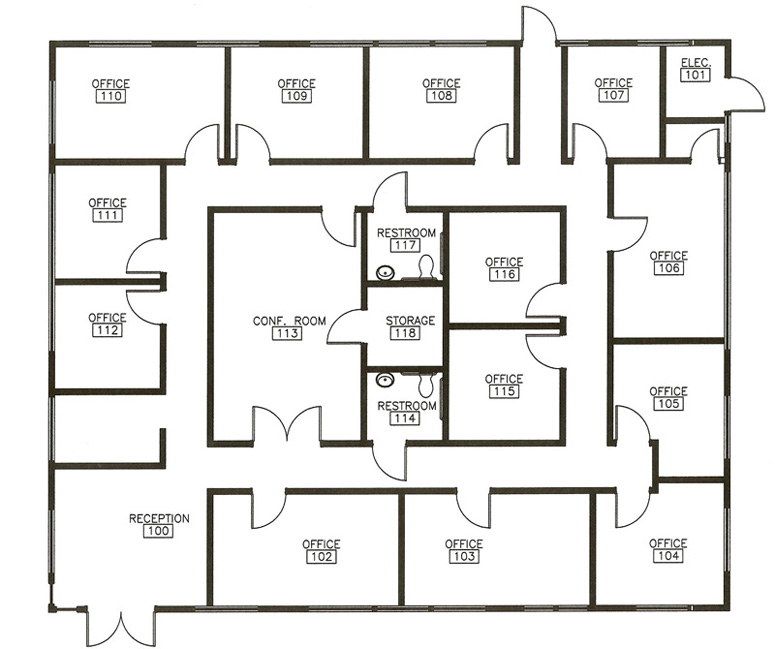


These are normally 900 millimeters (or 36 inches) wide. Pro tip: If you're unsure how wide something is and don't have a tape measure handy, look around for a nearby single swing door. Once you've finished take a photo on your phone and upload it to your computer. Make sure to include all of the doors and windows. It doesn't have to be neat, we can fix that up later. Just sketch out a rough plan on a blank sheet of paper. If you don't have a building evacuation diagram, that's okay. While these don't typically include furnishing information, they do normally include major structural elements like walls, doors, columns, elevators, and staircases. Provided that you don't need your floor plan to be millimeter perfect, you can save yourself a lot of time with a measuring tape by taking a photo of your pre-existing building evacuation diagram.

Typically you will find these plans on display next to the fire stairs or emergency exit. The vast majority of offices in the world will have a fire escape diagram available. Step 1: Where possible, start with a fire escape plan or building evacuation diagram You can use this process to create your floor plan for your OfficeMaps account, or you can use it to quickly create a simple seating chart or diagram. Here are a few tips and tricks we've picked up over the years to help you quickly and easily build a floor plan or layout plan for your office. You're now ready to use Power Map as you would with any other geographical data.Create a Floor Plan of Your Office A simple guide on how to create a floor plan of your office, using freely available tools.Ī common question that the OfficeMaps onboarding team is asked is "What is the best way to create a floor plan of our office"? In the Custom Maps Options box, click Browse for the background picture, locate the picture you want to use, select it, and click Open.Īdjust the X and Y coordinates as needed.įlip the axes by checking the Swap the X and Y axis box.Ĭheck the Lock current coordinate values box if you don't want the values to be changed.Ĭlick Apply to accept the selections you made, and click Next in the Layer Pane. In Excel, open the workbook that has the X and Y coordinates data for your image. Here's how you can use those items to create your custom map: Tip: If you don't have X and Y data yet, try using Microsoft Paint to record the pixel position of items in your picture and enter them in X and Y columns on your worksheet.


 0 kommentar(er)
0 kommentar(er)
